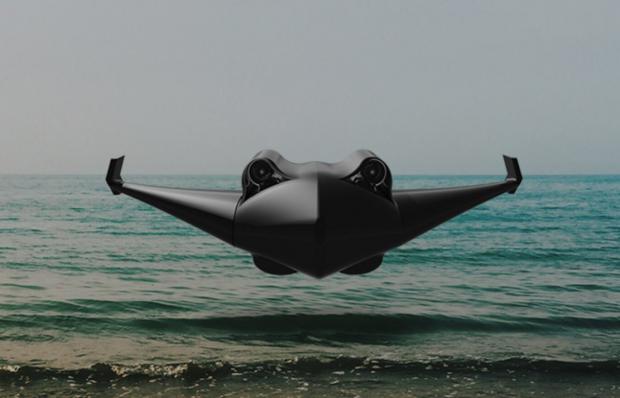
Breaking News
 Red Light Therapy And Men's Health: Does It Really Work?
Red Light Therapy And Men's Health: Does It Really Work?
 Kash Patel's New FBI Clown Show - The Bizarre Interview He Will Regret For The Rest of His Life
Kash Patel's New FBI Clown Show - The Bizarre Interview He Will Regret For The Rest of His Life
 One Rifle I Trust for Everything
One Rifle I Trust for Everything
 The West Coast Is Being Absolutely Pummeled By Trillions Of Gallons Of Rain, Wind Speeds Of Up...
The West Coast Is Being Absolutely Pummeled By Trillions Of Gallons Of Rain, Wind Speeds Of Up...
Top Tech News
 This tiny dev board is packed with features for ambitious makers
This tiny dev board is packed with features for ambitious makers
 Scientists Discover Gel to Regrow Tooth Enamel
Scientists Discover Gel to Regrow Tooth Enamel
 Vitamin C and Dandelion Root Killing Cancer Cells -- as Former CDC Director Calls for COVID-19...
Vitamin C and Dandelion Root Killing Cancer Cells -- as Former CDC Director Calls for COVID-19...
 Galactic Brain: US firm plans space-based data centers, power grid to challenge China
Galactic Brain: US firm plans space-based data centers, power grid to challenge China
 A microbial cleanup for glyphosate just earned a patent. Here's why that matters
A microbial cleanup for glyphosate just earned a patent. Here's why that matters
 Japan Breaks Internet Speed Record with 5 Million Times Faster Data Transfer
Japan Breaks Internet Speed Record with 5 Million Times Faster Data Transfer
 Advanced Propulsion Resources Part 1 of 2
Advanced Propulsion Resources Part 1 of 2
 PulsarFusion a forward-thinking UK aerospace company, is pushing the boundaries of space travel...
PulsarFusion a forward-thinking UK aerospace company, is pushing the boundaries of space travel...
 Dinky little laser box throws big-screen entertainment from inches away
Dinky little laser box throws big-screen entertainment from inches away
 'World's first' sodium-ion flashlight shines bright even at -40 ºF
'World's first' sodium-ion flashlight shines bright even at -40 ºF
US Air Force backs Valkyrie's high-speed, amphibious jet-powered eVTOL

The USAF's AFWERX High-Speed Vertical Takeoff and Landing (HSVTOL) concept challenge sees the military throwing the floor open to a range of private companies in search of ideas that'll eventually lead to next-gen VTOL aircraft capable of going a lot quicker than current VTOL machines like the V-22 Osprey.
Valkyrie's HoverJet Guardian concept certainly seems to fit the bill. Essentially, it appears to be a powerful, optionally-piloted jet aircraft with an electric VTOL system built in.
The VTOL system appears to use a quadcopter layout, with four props (or perhaps eight mounted coaxially) hiding in holes in its fat wings. These get it off the ground in relatively civilized fashion, but then a pair of Pratt & Whitney 545c turbofan engines take over, adding a combined 8,200 pounds of horizontal thrust to the mix.
The result, claims Valkyrie, is a cruise speed of 340 mph (547 km/h), a transonic top sprint speed of 700 mph (1,127 km/h), and a whopping 15 hours of endurance at altitudes up to 40,000 feet (12,192 m).
This is no small bird. Measuring 24 x 30 x 6 ft (7.3 x 9.1 x 1.8 m), it'll weigh 4,200 lb (1,905 kg) empty. Add fuel, a pilot and/or up to 2,000 lb (907 kg) of cargo, and that little VTOL system will have to lift the Guardian at a maximum takeoff weight of 12,000 lb (5,443 kg).
That's considerably heavier, say, than the Joby S4, which is said to be around 8,820 lb (4,000 kg), and it uses fewer, smaller propellers. So those props are going to have to work hard. On the other hand, since it'll run primarily on jet fuel, energy storage won't be an issue at all, and the electric systems can be tuned for high power rather than efficiency.
High-speed VTOL is not all these things bring to the table, either. The Guardian, and its smaller brother, the Eagle UAV, are apparently capable of landing on water, and offering "three modes of operation: aircraft, hovercraft and amphibious." Exactly how the hovercraft mode works is a bit of a mystery at this point, but a VTOL aircraft capable of taking off and landing on nearly any surface, then flirting with the sound barrier once airborne, would clearly be a very useful platform.



